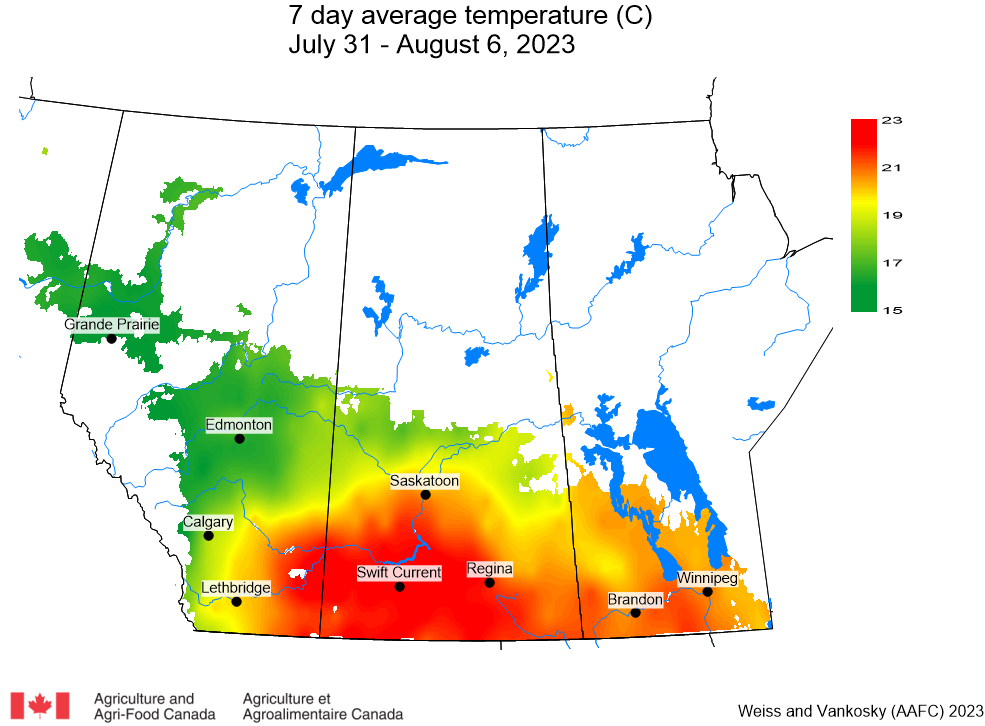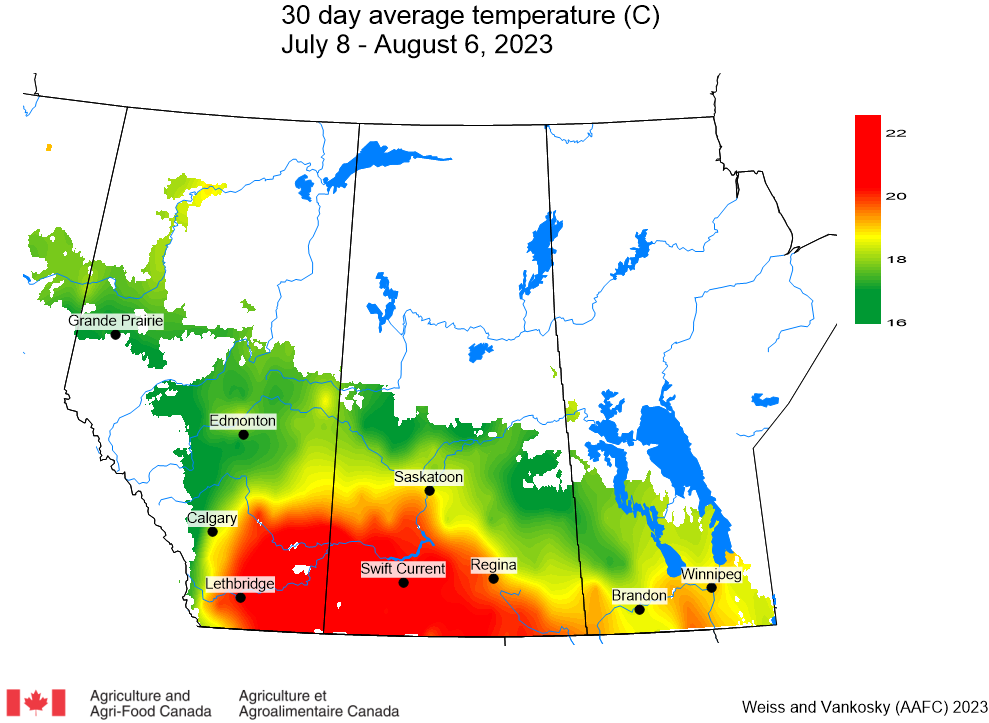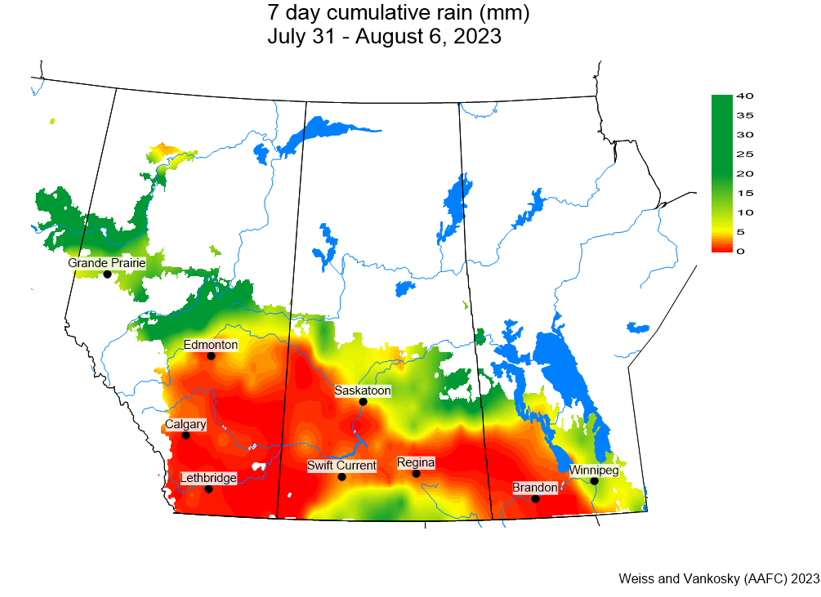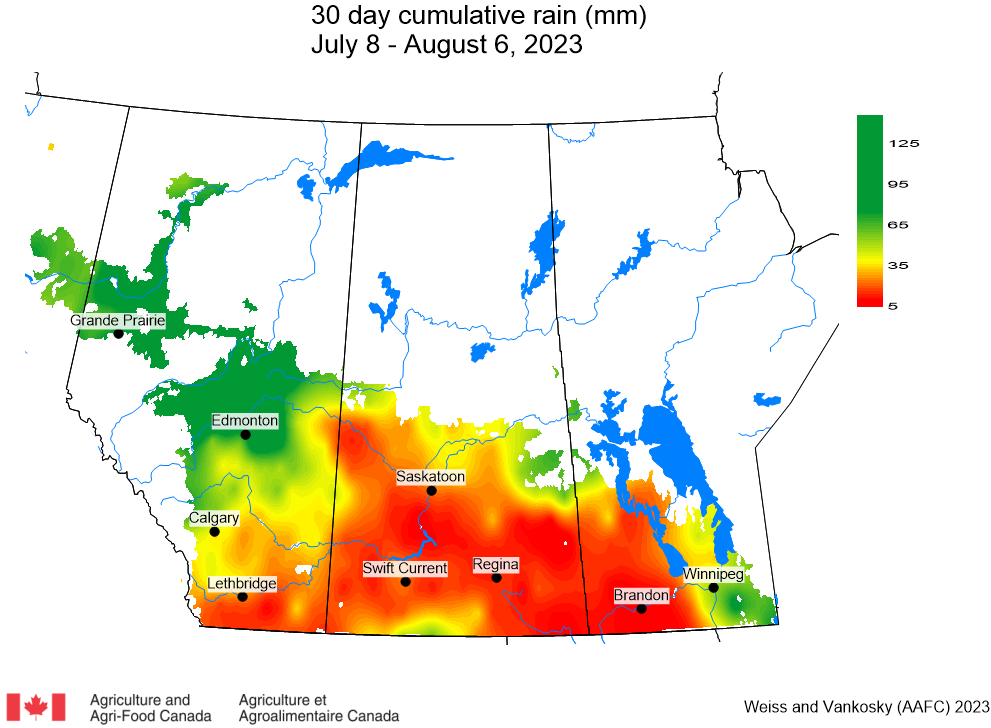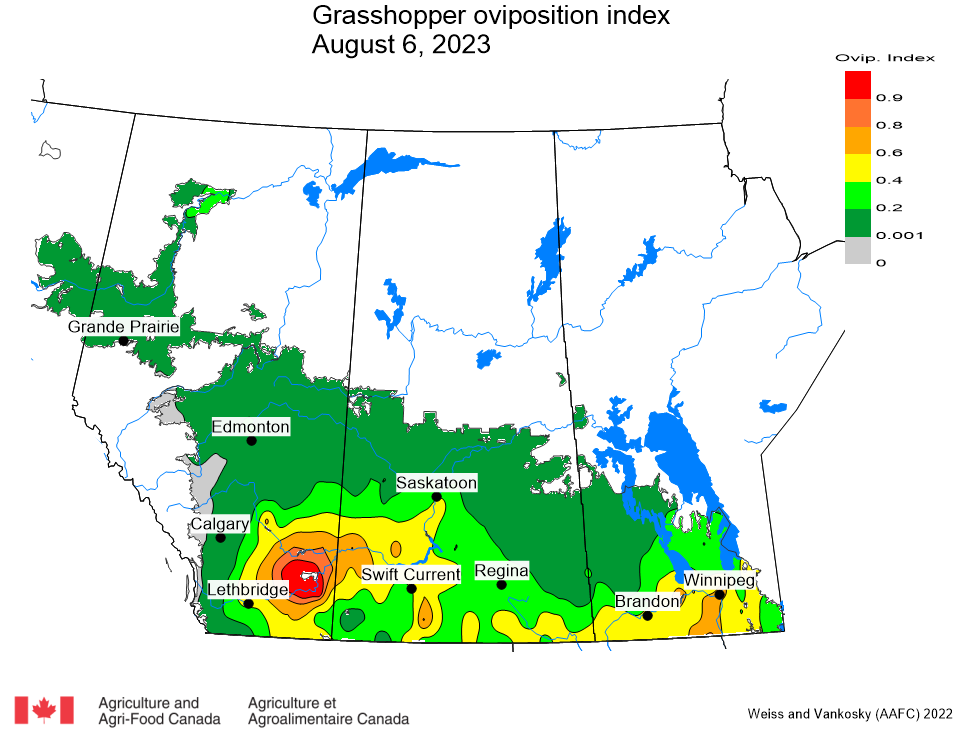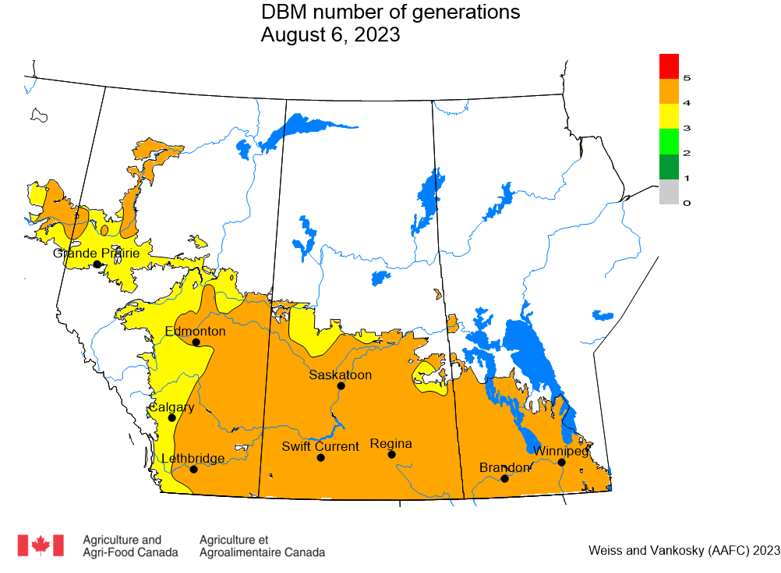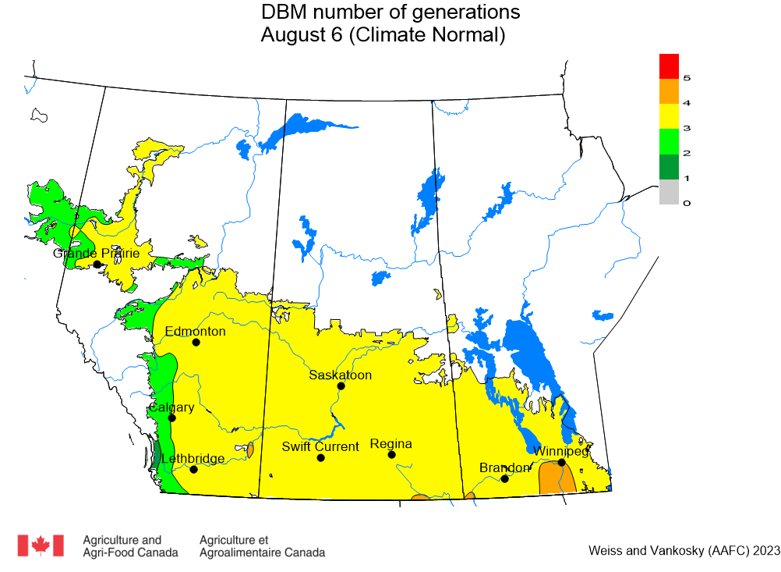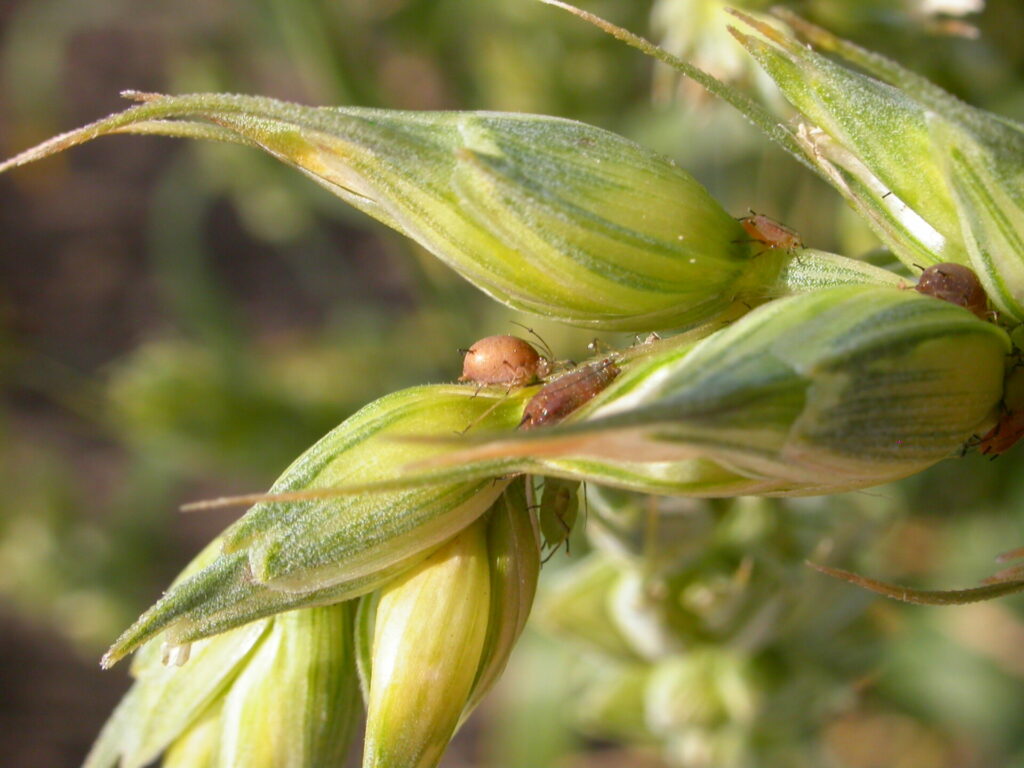Insect scouting season continues! Development of many pest insects (and of their host crops) is ahead of schedule this year, thanks to warmer than average weather during this growing season.
Adult grasshoppers are now in flight and are expected to be busy reproducing across the prairie region. Scouting individual fields is important to best estimate crop risk. At this time of year, we start to look forward to next season. Insect surveyors are now working to estimate grasshopper populations in ditches/roadsides and may be collecting samples of adult grasshoppers for species identification.
Diamondback moth, if present, are into the fourth non-migrant generation across most of the prairies now. Keep in mind that diamondback moth develop quickly in warm weather which could lead to rapidly increasing populations over the summer.
Use the links in the Provincial Insect Updates post to learn more about what is happening with insect pest (and beneficial insect) populations in your province.
Remember: 1) there are many resources available to help with planning for late-season insecticide applications to ensure Pre-Harvest Interval requirements are met, and 2) insect Monitoring Protocols containing information about in-field scouting as well as information about insect pest biology and identification are available from the Prairie Pest Monitoring Network.
Finally, due to the long weekend and my departure for southern Saskatchewan early on Tuesday morning (to help with the aforementioned grasshopper survey), I wasn’t able to post the Insect of the Week until today. This week, we feature Aphidius spp. parasitoids, an important natural enemy of aphids.
To receive Weekly Updates automatically, please subscribe to the website!
Questions or problems accessing the contents of this Weekly Update? Please contact Dr. Meghan Vankosky (meghan.vankosky@agr.gc.ca) to get connected to our information. Past Weekly Updates, full of information and helpful links, can be accessed on our Weekly Update page.

